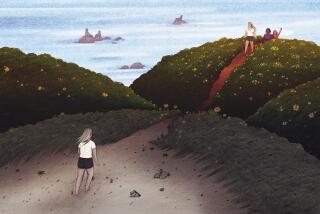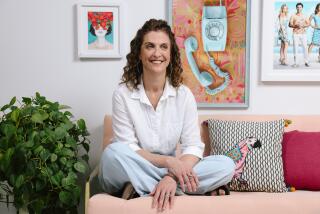Book review: ‘Composing a Further Life’
Stop for a moment to absorb this possibility: Rather than dreading a protracted old age, consider that you have been given the gift of an extra phase, what Mary Catherine Bateson calls “Adulthood II.” There are no longer three generations in one average lifetime, but four (more great grandmothers!). This new phase might begin at 40, or it might begin, as Jane Fonda testifies in “Composing a Further Life,” at 60.
In the United States, we are, on average, living 30 years longer than we did in the 19th century, 20 years longer since World War II. “We have not added decades to life expectancy by simply extending old age; instead, we have opened up a new space partway through the life course, a second and different kind of adulthood that precedes old age, and as a result every stage of life is undergoing change.”
This is the kind of life-altering perspective we can expect from Bateson, student and teacher of the developmental psychologist Erik Erikson, daughter of anthropologists Gregory Bateson and Margaret Mead.
Bateson’s most famous book, “Composing a Life,” was published in 1989. It spread, word-of-mouth, hand to hand, around the world — reprinted dozens of times in more than a dozen languages. The message was: Life is an art form, not a linear, predictable process. We do the best we can at each potential turning point, given the information and the self-knowledge we possess. It is the kind of book fans keep multiple copies of, to press into the hands of friends busily agonizing over how to exert their will over the course of their own lives.
In this new book, Bateson encourages a similar, lapidary approach to the question: What are we going to do with this gift of time? “How, in growing older do I become more truly myself, and how does that spell out in what I do or say or contribute?” She looks at the activism, the career opportunities, the opportunities for creative expression and the wisdom that can come with this new phase: “Those who are grandparents today are unlike the grandparents they remember. They adore their grandchildren, but they just aren’t sitting still.” Her intention in this, her 11th book, is to “challenge individuals not only to thoughtful discernment and creativity in composing a further life but to greater engagement.”
Bateson’s medium is life stories. In this and other books she weaves a narrative through a handful of stories. Here, she searches for the continuity in lives — before and after retirement. What are the skills and also the passions that people forge into new contributions? The boatyard worker in Maine who used his metal working skills to make jewelry, becoming a craftsman in his later years and building a community of other craftsmen and women. The academic who turned his teaching skills into mentoring and the creation of nonprofit organizations. The actress who turned her training — the ability to empathize — and her financial resources into work with teenage girls. These may not have been the same issues they cared about in their 20s and 30s — for example, rather than work for abortion rights, a person in a second adulthood might care more about death with dignity legislation.
This is an important shift in perspective: If you see yourself sliding into old age you might be less likely to take on something new with a vengeance. While the idea of retirement encourages a “play stage,” Adulthood II is a time to bring one’s wisdom to bear on the world. (In other words, write the memoir in your 50s or 60s, not your 20s.)
Perhaps it’s a result of being raised by anthropologists — Bateson has a gift for looking over the wall. Most of us are too busy getting through the day to imagine the possible course of our lives (for example, Lord, get me out of this traffic and home so I can just make dinner). Borrowing a model from recent work in evolutionary science — she describes the importance of “punctuated equilibrium,” what the geeks call “punk eek.” While most of us strive for smooth continuity in our lives, Bateson champions (here and in “Composing a Life”) the virtues of discontinuity —the growth spurts, the sudden illuminations, and the slowing down, the aging. “Punctuation,” she writes, “may be essential to the examined life.”
We connect the phases of our lives like so many tiles in a mosaic. This is our medium, our art. “Connecting things is for me one key meaning of composing, as women have tried to combine multiple commitments in ways that are not only workable but graceful.” Bateson reminds us that there is grace in the interstices, the wobbly places.
As we slow down, there is a tendency to soften and look inward. In a conversation with Fonda, Bateson explores the possibility that elders, moving “from ego into soul,” experience a different but equally important phase of spirituality, serve as role models and can contribute a long-term perspective to a wide range of issues, personal and political.
More to Read
Sign up for our Book Club newsletter
Get the latest news, events and more from the Los Angeles Times Book Club, and help us get L.A. reading and talking.
You may occasionally receive promotional content from the Los Angeles Times.










